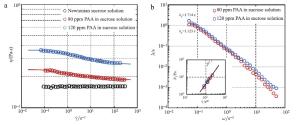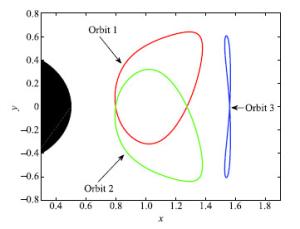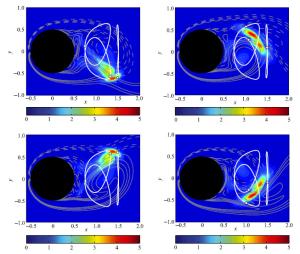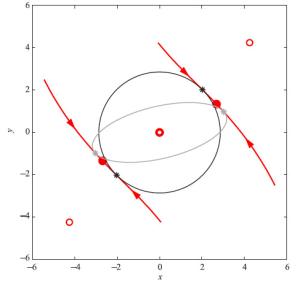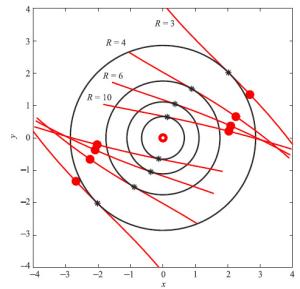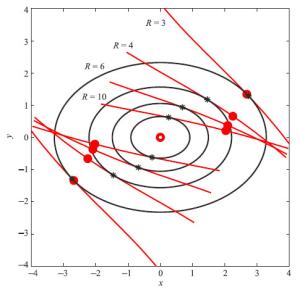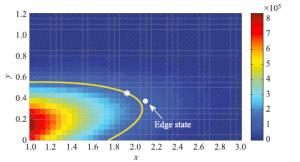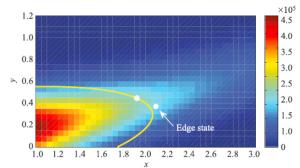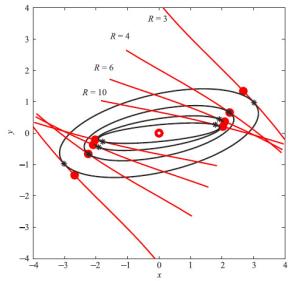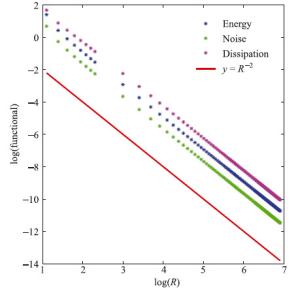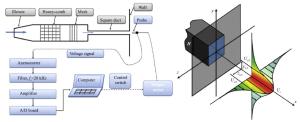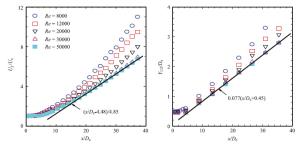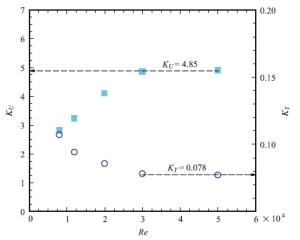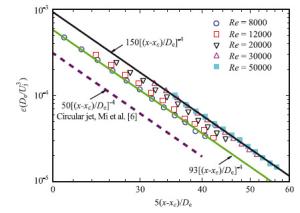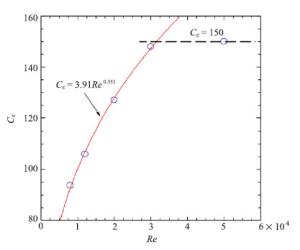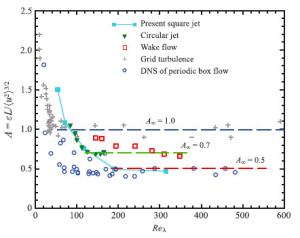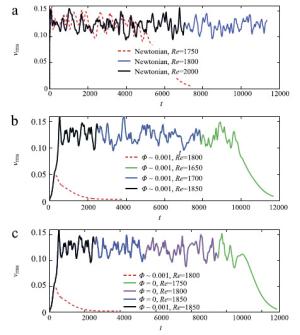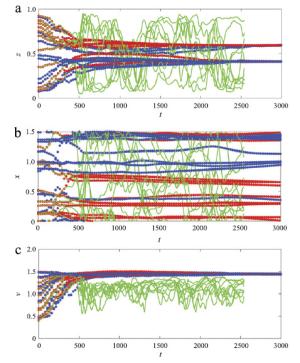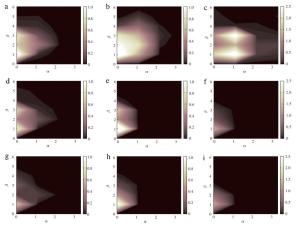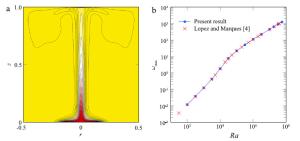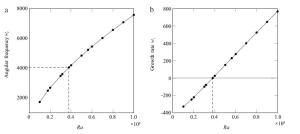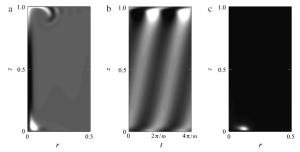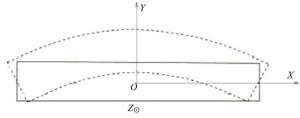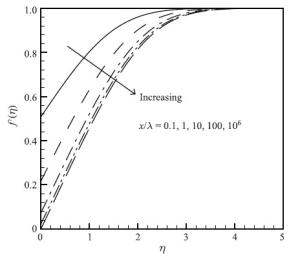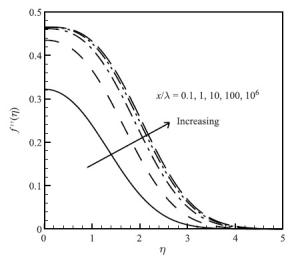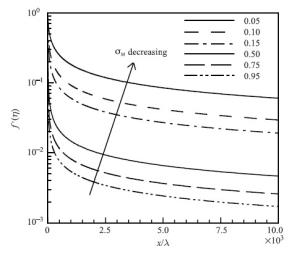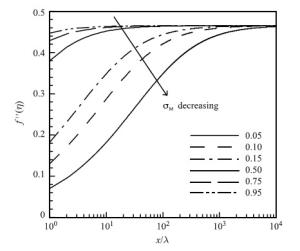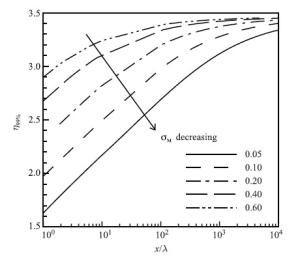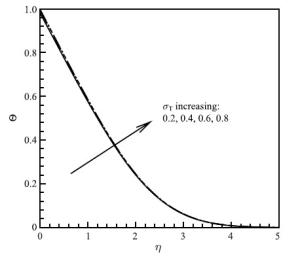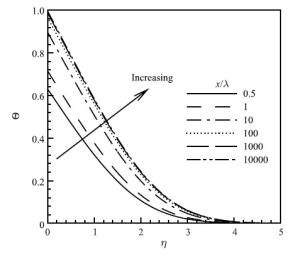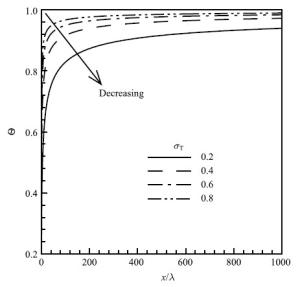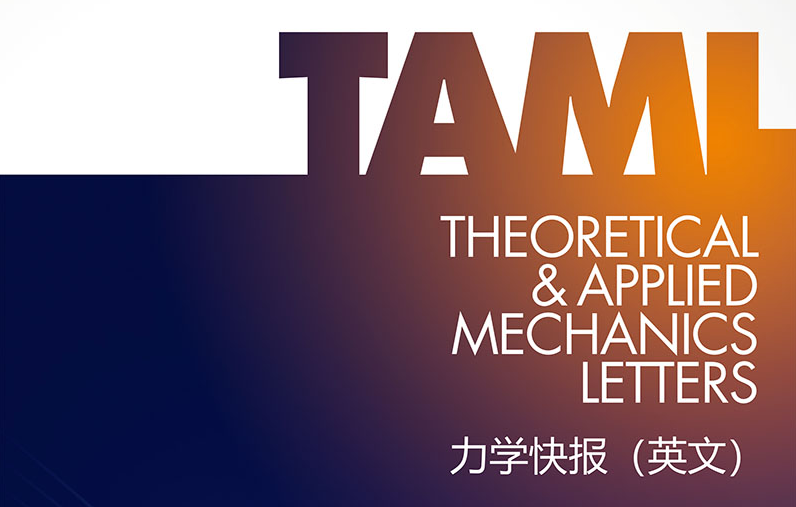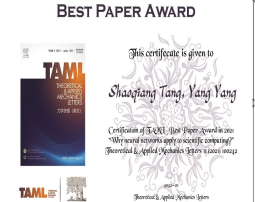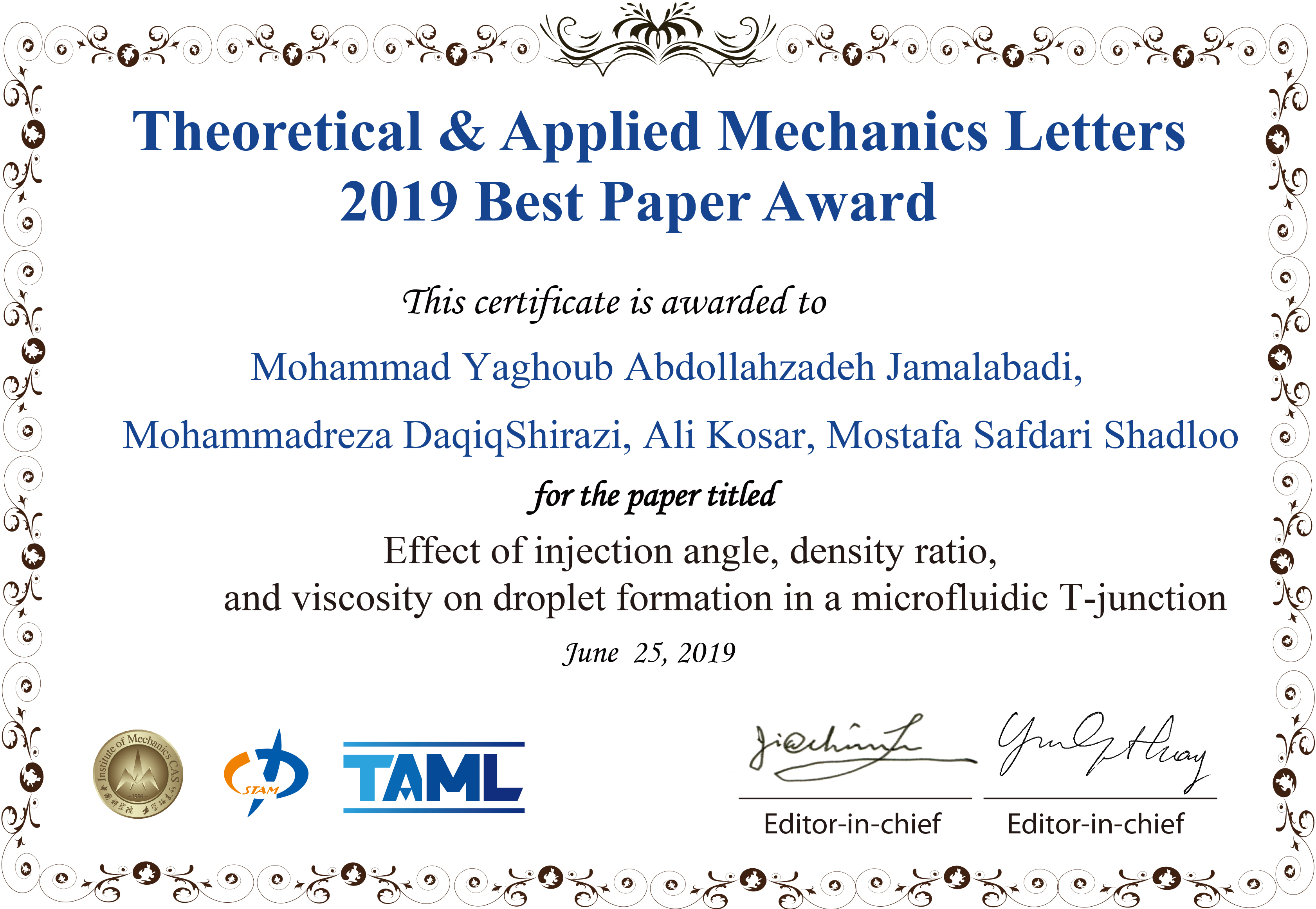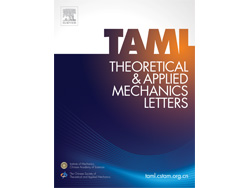Institute of Mechanics,
Chinese Academy of Sciences
2015 Vol.5(3)
Display Mode: |
Theoretical and Applied Mechanics Letters 2015, 5(3): 101-102.
doi: 10.1016/j.taml.2015.03.007
Abstract:
Theoretical and Applied Mechanics Letters 2015, 5(3): 103-136.
doi: 10.1016/j.taml.2015.03.006
Abstract:
Small concentrations of a high-molecular-weight polymer have been used to create so-called ‘‘elastic turbulence’’in a micro-scale serpentine channel geometry. It is known that the interaction of large elasticstresses created by the shearing motion within the fluid flow with streamline curvature of the serpentinegeometry leads initially to a purely-elastic instability and then the generation of elastic turbulence. Weshow that this elastic turbulence enhances the heat transfer at the micro-scale in this geometry by up to300% under creeping flow conditions in comparison to that achieved by the equivalent Newtonian fluidflow.
Small concentrations of a high-molecular-weight polymer have been used to create so-called ‘‘elastic turbulence’’in a micro-scale serpentine channel geometry. It is known that the interaction of large elasticstresses created by the shearing motion within the fluid flow with streamline curvature of the serpentinegeometry leads initially to a purely-elastic instability and then the generation of elastic turbulence. Weshow that this elastic turbulence enhances the heat transfer at the micro-scale in this geometry by up to300% under creeping flow conditions in comparison to that achieved by the equivalent Newtonian fluidflow.
Theoretical and Applied Mechanics Letters 2015, 5(3): 107-110.
doi: 10.1016/j.taml.2015.03.001
Abstract:
The nature of the three-dimensional transition arising in the flow past a cylinder is investigated by applying the Lifschitz–Hameiri theory along special Lagrangian trajectories existing in its wake. Results show that the von Kármán street is unstable with regard to short-wavelength perturbations. The asymptotic analysis predicts the possible existence of both synchronous (as modes A and B) and asynchronous (as mode C) instabilities, each associated to specific Lagrangian orbits. The proposed study provides useful qualitative information on the origin of the different modes but no quantitative agreement between the growth rates predicted by the asymptotic analysis and by a global stability analysis is observed. The reasons for such mismatch are briefly discussed and possible improvements to the present analysis are suggested.
The nature of the three-dimensional transition arising in the flow past a cylinder is investigated by applying the Lifschitz–Hameiri theory along special Lagrangian trajectories existing in its wake. Results show that the von Kármán street is unstable with regard to short-wavelength perturbations. The asymptotic analysis predicts the possible existence of both synchronous (as modes A and B) and asynchronous (as mode C) instabilities, each associated to specific Lagrangian orbits. The proposed study provides useful qualitative information on the origin of the different modes but no quantitative agreement between the growth rates predicted by the asymptotic analysis and by a global stability analysis is observed. The reasons for such mismatch are briefly discussed and possible improvements to the present analysis are suggested.
Theoretical and Applied Mechanics Letters 2015, 5(3): 111-116.
doi: 10.1016/j.taml.2015.04.003
Abstract:
The transition to turbulence in flows where the laminar profile is linearly stable requires perturbationsof finite amplitude. "Optimal" perturbations are distinguished as extrema of certain functionals, anddifferent functionals give different optima. We here discuss the phase space structure of a 2D simplifiedmodel of the transition to turbulence and discuss optimal perturbations with respect to three criteria:energy of the initial condition, energy dissipation of the initial condition, and amplitude of noise in astochastic transition. We find that the states triggering the transition are different in the three cases, butshow the same scaling with Reynolds number.
The transition to turbulence in flows where the laminar profile is linearly stable requires perturbationsof finite amplitude. "Optimal" perturbations are distinguished as extrema of certain functionals, anddifferent functionals give different optima. We here discuss the phase space structure of a 2D simplifiedmodel of the transition to turbulence and discuss optimal perturbations with respect to three criteria:energy of the initial condition, energy dissipation of the initial condition, and amplitude of noise in astochastic transition. We find that the states triggering the transition are different in the three cases, butshow the same scaling with Reynolds number.
Theoretical and Applied Mechanics Letters 2015, 5(3): 117-120.
doi: 10.1016/j.taml.2015.04.001
Abstract:
The effects of Reynolds number on both large-scale and small-scale turbulence properties are investigated in a square jet issuing from a square pipe.The detailed velocity fields were measured at five different exit Reynolds numbers of 8 × 103 ≤ Re ≤ 5 × 104.It is found that both large-scale properties (e.g.,rates of mean velocity decay and spread) and small-scale properties (e.g.,the dimensionless dissipation rate constant A=εL/〈μ2〉3/2) are dependent on Re for Re ≤ 3 × 104 or Reλ ≤ 190,but virtually become Re-independent with increasing Re or Reλ.In addition,for Reλ > 190,the value of A=εL/〈μ2〉3/2 in the present square jet converges to 0.5,which is consistent with the observation in direct numerical simulations of box turbulence,but lower than that in circular jet,plate wake flows,and grid turbulence.The discrepancies in critical Reynolds number and A=εL/〈μ2〉3/2 among different turbulent flows most likely result from the flow type and initial conditions.
The effects of Reynolds number on both large-scale and small-scale turbulence properties are investigated in a square jet issuing from a square pipe.The detailed velocity fields were measured at five different exit Reynolds numbers of 8 × 103 ≤ Re ≤ 5 × 104.It is found that both large-scale properties (e.g.,rates of mean velocity decay and spread) and small-scale properties (e.g.,the dimensionless dissipation rate constant A=εL/〈μ2〉3/2) are dependent on Re for Re ≤ 3 × 104 or Reλ ≤ 190,but virtually become Re-independent with increasing Re or Reλ.In addition,for Reλ > 190,the value of A=εL/〈μ2〉3/2 in the present square jet converges to 0.5,which is consistent with the observation in direct numerical simulations of box turbulence,but lower than that in circular jet,plate wake flows,and grid turbulence.The discrepancies in critical Reynolds number and A=εL/〈μ2〉3/2 among different turbulent flows most likely result from the flow type and initial conditions.
Theoretical and Applied Mechanics Letters 2015, 5(3): 121-125.
doi: 10.1016/j.taml.2015.04.004
Abstract:
We study the transition to turbulence of channel flow of finite-size particle suspensions at low volumefraction, i.e., Φ ≈ 0.001. The critical Reynolds number above which turbulence is sustained reduces toRe ≈ 1675, in the presence of few particles, independently of the initial condition, a value lower than thatof the corresponding single-phase flow, i.e., Re ≈ 1775. In the dilute suspension, the initial arrangementof the particles is important to trigger the transition at a fixed Reynolds number and particle volumefraction. As in single phase flows, streamwise elongated disturbances are initially induced in the flow.If particles can induce oblique disturbances with high enough energy within a certain time, the streaksbreakdown, flow experiences the transition to turbulence and the particle trajectories become chaotic.Otherwise, the streaks decay in time and the particles immigrate towards the channel core in a laminarflow.
We study the transition to turbulence of channel flow of finite-size particle suspensions at low volumefraction, i.e., Φ ≈ 0.001. The critical Reynolds number above which turbulence is sustained reduces toRe ≈ 1675, in the presence of few particles, independently of the initial condition, a value lower than thatof the corresponding single-phase flow, i.e., Re ≈ 1775. In the dilute suspension, the initial arrangementof the particles is important to trigger the transition at a fixed Reynolds number and particle volumefraction. As in single phase flows, streamwise elongated disturbances are initially induced in the flow.If particles can induce oblique disturbances with high enough energy within a certain time, the streaksbreakdown, flow experiences the transition to turbulence and the particle trajectories become chaotic.Otherwise, the streaks decay in time and the particles immigrate towards the channel core in a laminarflow.
Theoretical and Applied Mechanics Letters 2015, 5(3): 126-128.
doi: 10.1016/j.taml.2015.05.001
Abstract:
A linear stability analysis is performed for a plume flow inside a cylinder of aspect ratio 1. The configurationis identical to that used by Lopez and Marques (2013) for their direct numerical simulation study.It is found that the first bifurcation, which leads to a periodic axisymmetric flow state, is accurately predictedby linear analysis: both the critical Rayleigh number and the global frequency are consistent withthe reported DNS results. It is further shown that pressure feedback drives the global mode, rather thanabsolute instability.
A linear stability analysis is performed for a plume flow inside a cylinder of aspect ratio 1. The configurationis identical to that used by Lopez and Marques (2013) for their direct numerical simulation study.It is found that the first bifurcation, which leads to a periodic axisymmetric flow state, is accurately predictedby linear analysis: both the critical Rayleigh number and the global frequency are consistent withthe reported DNS results. It is further shown that pressure feedback drives the global mode, rather thanabsolute instability.
Theoretical and Applied Mechanics Letters 2015, 5(3): 129-133.
doi: 10.1016/j.taml.2015.04.002
Abstract:
We provide analytical solutions to the problems of a circular bending of a beam in plane strain and the torsion of a non-circular cross-section beam, the beams obeying a second-gradient elasticity law proposed by the author, following a previous suggestion of Dell’Isola et al. (2009). The motivation was to find benchmark analytical solutions that can serve to grasp the physical foundations of second gradient elasticity laws for heterogeneous materials. The analytical solution of the circular beam problem presents the additional advantage to establish some nice properties on the unknown second gradient elastic moduli introduced by Enakoutsa (2014) model and the classical elasticity constants for both incompressible and compressible heterogeneous elastic materials. A framework to find the elastic moduli of the new model is also proposed.
We provide analytical solutions to the problems of a circular bending of a beam in plane strain and the torsion of a non-circular cross-section beam, the beams obeying a second-gradient elasticity law proposed by the author, following a previous suggestion of Dell’Isola et al. (2009). The motivation was to find benchmark analytical solutions that can serve to grasp the physical foundations of second gradient elasticity laws for heterogeneous materials. The analytical solution of the circular beam problem presents the additional advantage to establish some nice properties on the unknown second gradient elastic moduli introduced by Enakoutsa (2014) model and the classical elasticity constants for both incompressible and compressible heterogeneous elastic materials. A framework to find the elastic moduli of the new model is also proposed.
Theoretical and Applied Mechanics Letters 2015, 5(3): 134-139.
doi: 10.1016/j.taml.2015.03.005
Abstract:
The problem of boundary layer flows at a flat plate surface with velocity-slip and temperature-jumpboundary conditions is analyzed. With the velocity slip conditions, there are multiple physical factorslumped together, and the boundary layer solutions significantly change their behaviors. The self-similarityin the solutions degenerates, however, the problem is still an ordinary differential equation which can besolved. Shooting methods are applied to solve the flowfield. The results include velocity and temperaturefor both the surface and flowfield. Unlike the traditional Blasius flat plate boundary layer solutions whichare self-similar through all the plate boundary layer, the new solutions indicate that the front tip is actuallya singularity point, especially at locations within one mean free path from the leading edge.
The problem of boundary layer flows at a flat plate surface with velocity-slip and temperature-jumpboundary conditions is analyzed. With the velocity slip conditions, there are multiple physical factorslumped together, and the boundary layer solutions significantly change their behaviors. The self-similarityin the solutions degenerates, however, the problem is still an ordinary differential equation which can besolved. Shooting methods are applied to solve the flowfield. The results include velocity and temperaturefor both the surface and flowfield. Unlike the traditional Blasius flat plate boundary layer solutions whichare self-similar through all the plate boundary layer, the new solutions indicate that the front tip is actuallya singularity point, especially at locations within one mean free path from the leading edge.
 Submit a Paper
Submit a Paper
 Subscription
Subscription
News
MORE+
Call for Papers
MORE+
- Crossing-Mechanics Driven by Big Data
- Machine learning in the fluid mechanics research of wind energy
- Mechanics of Origami/Kirigami structures and metamaterials
- New insights and perspectives on impact biomechanics for human tissues: from injury prevention, protection to protective equipment
- Environmental Mechanics for Extreme Natural Events




